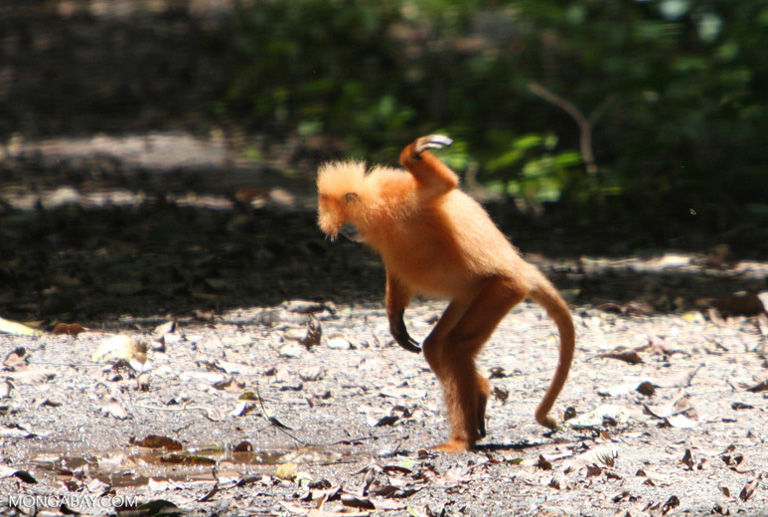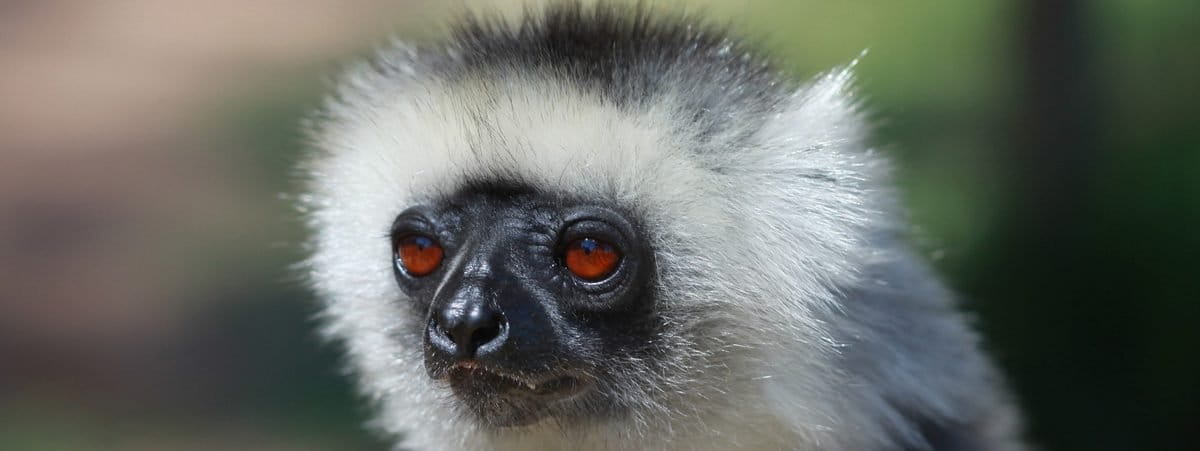- New research shows that many of the 65 percent of the world’s primate species found in four countries — Brazil, Indonesia, Madagascar and the Democratic Republic of Congo — face the threat of extinction.
- The scientists involved in the study used maps of primate ranges and information on the threats they face to predict what might happen to the animals through the end of the 21st century.
- They found that increases in the amount of land turned over for human food production could cause the primate habitats to shrink substantially in these countries.
- However, the team also found that intensive conservation measures could dramatically reduce the loss of primate habitat by 2100 and potentially avert the mass extinction of these species.
Our primate cousins have managed to colonize a broad swath of the planet, taking up residence in 90 countries. Still, the majority of monkey, ape, lemur, tarsier and lorisid species live in Brazil, Indonesia, Madagascar and the Democratic Republic of Congo (DRC), and a new study finds that 62 percent of those species face the specter of extinction due to hunting and the splintering and outright loss of their habitats.
It came as little surprise to University of Illinois primatologist Paul Garber that these four countries, forested bulwarks of biodiversity that they are, have been fertile grounds for the rise of unique species. The sheer proportion of the world’s primates they contain, however, was telling, Garber said.
“The realization that these four countries harbor 65 percent of the world’s primate species made writing our current paper a priority,” he said in an email to Mongabay. He and his colleagues report their findings today in the journal PeerJ.

In 2017, Garber and 30 other primate researchers from around the world concluded that 60 percent of all primate species could be wiped out soon by human activity.
“It was during the research and writing of that manuscript that I first realized how critically important Brazil, Indonesia, Madagascar and DRC were to avoiding a mass primate extinction crisis,” he said.
Collectively, these four countries contain 286 species out of a total of 439 primate species. But each also levels a fusillade of dangers from human activity at the survival of these animals, and their numbers are declining in all of them. To better understand those challenges, how they might impact primate populations, and what governments, conservationists and scientists can do about them, the team sifted through studies on primates around the world and reports on trends like agricultural expansion. They then developed a series of spatial models to predict how threats might impinge on the current range of primates through the end of the 21st century.

Across the countries included in the study, more than 60 percent of the primates are listed as vulnerable, endangered or critically endangered by the IUCN. In Indonesia and Madagascar, more than 90 percent of the species present fall into those categories.
For Indonesia, Madagascar and Brazil, the disappearance of forests as land is turned over to food production remains a significant threat to primate habitat, the authors found. In the DRC, where recent research has shown that traditional agriculture led to more than 90 percent of the forest loss in the first decade of this century, bushmeat hunting poses the greatest danger to the country’s 36 primate species.
The researchers also looked at what could happen under three sets of conditions: a “business-as-usual” model, as well as optimistic and pessimistic possibilities.
“The usefulness of such exercise is that it suggests that conservation-oriented strategies of land use can avert the worst-case scenario,” Alejandro Estrada, a primatologist at the National Autonomous University of Mexico and the lead author of both the current and 2017 studies, told Mongabay in an email.

That worst-case scenario, which assumed that the proportion of agricultural expansion would continue to swell beyond the current pace, led the researchers to predict that the current range of primates would shrink substantially by 2100, from by about 32 percent for the DRC up to a high of more than 75 percent in Brazil. By contrast, governments, scientists and NGOs working together to protect primates could reduce the loss of habitat to just 12 percent in Brazil and 24 percent in the DRC.
To stem these habitat losses, the authors call for an increase in the size of parks and preserves where primates live. Currently, just 17 percent of primate habitat in Indonesia and 14 percent in the DRC falls within the boundaries of protected areas, while less than 40 percent of primates’ range is protected in Brazil and Madagascar.
But just setting aside small pockets of land for primates won’t be enough to ensure their survival, Estrada said.
“Expanding the system of protected areas is critical, but these need to be not ‘far and high’ but rather close to each other, linked with forest corridors and accessible for supervision,” he said.
What’s more, addressing the swarm of threats — from expanding the amount of land devoted to food production, but also from mining, hunting and infrastructure projects such as dams — will require “a multipronged approach,” Estrada said.
These strategies must also address the poverty, corruption and the outsize influence of international corporations that can often exacerbate these threats, Garber said.

“In my view, there is no effective conservation solution for nonhuman primates that does not involve improving the lives of the local human primate communities,” he said.
Indeed, other risks will undoubtedly impact nonhuman and human primates alike, the scientists say. Climate change could diminish the amount of viable primate habitat and could imperil our own survival as a species. So could disease, which, when combined with continued bushmeat hunting, could create what Estrada calls “a vicious epidemiological circle.”
“Our fellow primates are like the canary in the coal mine,” Garber said. “If we continue to pollute, degrade, alter, and destroy natural environments and human-made environments, then in the long-term, the nonhuman primates will be gone, but humans also will not be able to survive in these environments.”
Estrada echoed those sentiments, adding that another, more intrinsic reason to save them exists: “They are our closest living biological relatives,” he said. “They are part of our natural world, and this is reason enough to protect them and to avoid local and widespread extinction.”
Banner image of a critically endangered diademed sifaka (Propithecus diadema) in Madagascar by Rhett A. Butler/Mongabay.
John Cannon is a Mongabay staff writer based in the Middle East. Find him on Twitter: @johnccannon
Citations
Estrada, A., Garber, P. A., Mittermeier, R. A., Wich, S., Gouveia, S., Dobrovolski, R., … Setiawan, A. (2018). Primates in peril: the significance of Brazil, Madagascar, Indonesia and the Democratic Republic of the Congo for global primate conservation. PeerJ, 6, e4869.
Estrada, A., Garber, P. A., Rylands, A. B., Roos, C., Fernandez-Duque, E., Di Fiore, A., … & Rovero, F. (2017). Impending extinction crisis of the world’s primates: Why primates matter. Science Advances, 3(1), e1600946.
FEEDBACK: Use this form to send a message to the author of this post. If you want to post a public comment, you can do that at the bottom of the page
